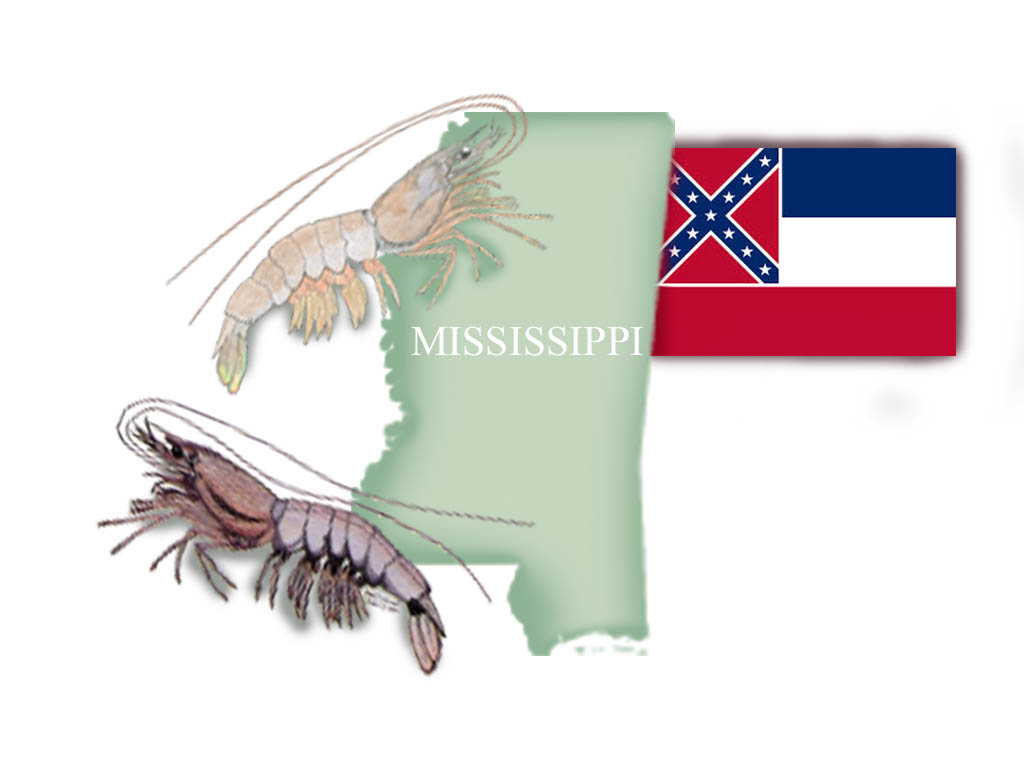Environmental influences are a significant factor in the population dynamics of both brown and white shrimp, and natural and anthropogenic alteration of habitat in the Gulf of Mexico impacts every stage of the shrimp life cycle. The critical determinant of shrimp production is estuarine environmental conditions. (GMFMC Shrimp FMP). However, wetland loss is a pervasive problem across the U.S. The eastern U.S. lost 59, 000 acres of wetland per year between 1998 and 2004 and Mississippi has lost 60% of historic wetland acreage to development (EPA – Gulf of Mexico Review). Activities that can contribute to habitat loss include but are not limited to pollution, eutrophication, and alterations in freshwater and sediment flow. Shrimp depend on the quality and quantity of estuarine marshes and submerged vegetation to successfully grow and recruit to the fishery (Turner and Brody 1983). In areas where marshes are separated from the estuary with manmade structures such as levees or bulkheads, postlarval and juvenile densities in the estuary are lower because less food is able to reach the area.
Water quality and quantity are also vital factors that can affect shrimp growth and populations. Major activities that can impact water quality include but are not limited to wastewater, agricultural activities, hazardous and industrial waste, land modifications for flood control, and navigational channels (Texas Parks and Wildlife 2002). Hypoxia events can affect the harvest of shrimp in the Gulf. Each year, due to runoff from agriculture and wastewater, a large area of the Gulf of Mexico becomes hypoxic, usually as commercial shrimpers are resuming harvest (NOAA Projects Explorer). On the Louisiana shelf, habitat loss resulting from hypoxia has decreased the range of brown shrimp by 25% since the 1980s (NOAA Projects Explorer). Hypoxia can also affect the fishery as shrimp move in search of more suitable habitat.
Freshwater inflow can also impact shrimp populations. Shrimp prefer low to moderate salinities, and not enough or too much freshwater can impact their movement and growth. Reduced shrimp harvest has been correlated with times of drought in Texas (Powell, Matsumoto, and Brock 2002). Griffen et al. (1976) attempted to determine yield as a function of discharge from the Mississippi River, which highly impacts salinity and temperature of primary estuarine habitats in the northern Gulf of Mexico. NOAA’S Southeastern Fisheries Science Center (SEFSC) Galveston Lab recently conducted a study on temperature and salinity effects on growth and survival of white shrimp in relation to freshwater inflow and potential implications of river diversions (Galveston Lab- current research). Mississippi received disaster funds for its shrimp fishery in 1997 due to the opening of the Bonne Carre spillway, which flooded the Pontchartrain Basin and Mississippi Sound with freshwater (NOAA – Fishery Disaster Assistance).
Previous: Stock Status Next: History of the Fishery
Return to MS Shrimp




